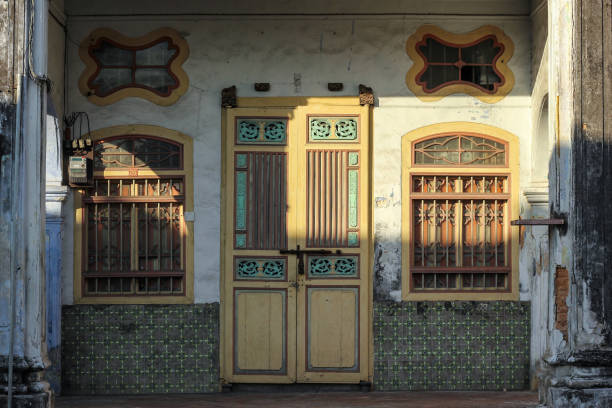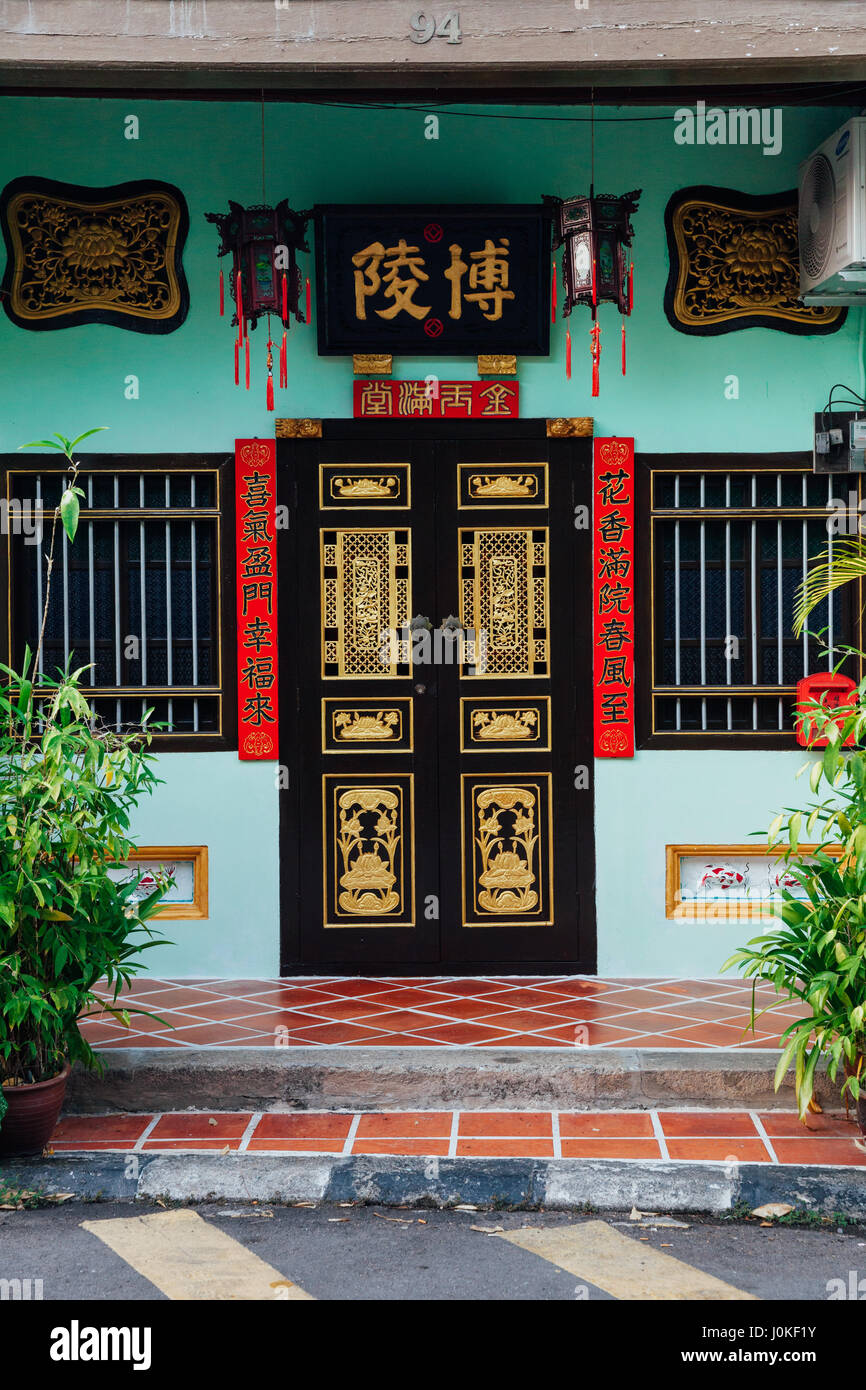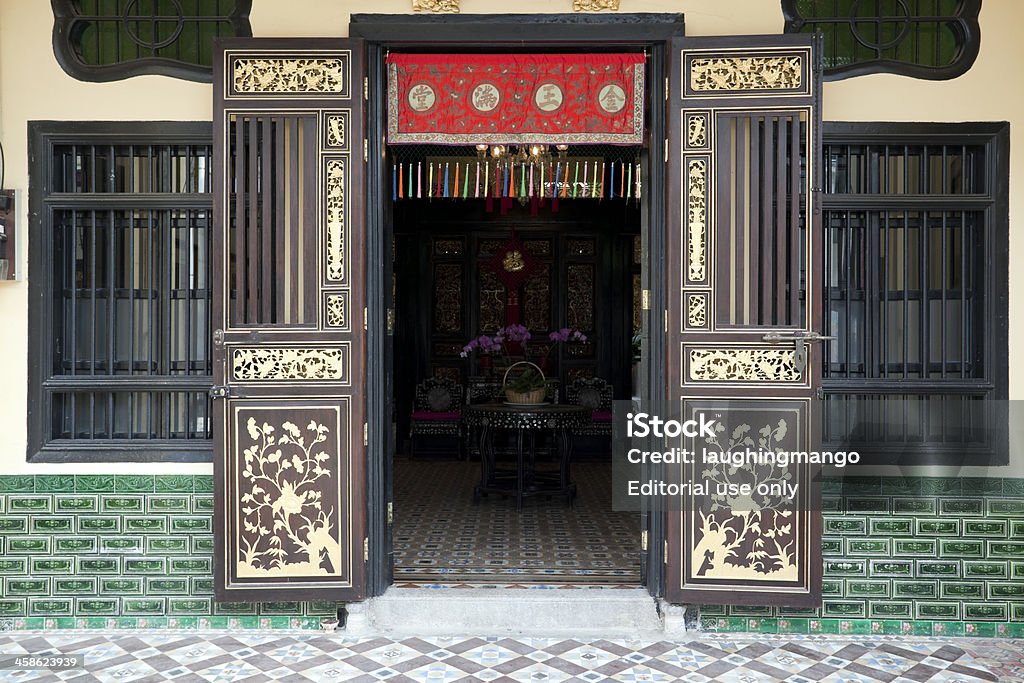As I strolled through the vibrant streets of Penang, Malaysia, in 2016, I was immediately captivated by the rich tapestry of history and culture that permeated the air. Amidst the bustling modern cityscape, one particular sight caught my eye – an old, weathered wall and a wooden door that seemed to whisper tales of the past.
The Charm of Penang’s Historic Architecture

Penang, often referred to as the “Pearl of the Orient,” is a unique blend of ancient and contemporary influences, where the past and present coexist in perfect harmony. The island’s historic architecture is a testament to its diverse cultural heritage, reflecting the imprints of Malay, Chinese, Indian, and European influences.
Uncovering the Architectural Gems of Penang
As I strolled through the streets, I couldn’t help but notice the intricate details that adorned the buildings – ornate facades, intricate woodcarvings, and delicate tile work. These architectural masterpieces served as a living museum, preserving the essence of Penang’s rich history.
One particular structure that captivated my attention was an old wall and a wooden door, nestled within a busy street. The wall, weathered by the elements, stood as a testament to the passage of time, while the wooden door, with its intricate carvings and worn hinges, seemed to beckon me to uncover the stories it held.
The Significance of Penang’s Historic Structures
The old wall and wooden door I encountered were not just passive elements of the streetscape; they were living embodiments of Penang’s history and cultural identity. These structures served as tangible reminders of the island’s past, offering a glimpse into the lives and experiences of those who had walked these streets before me.
Penang’s historic architecture is not merely a decoration or a tourist attraction; it is a crucial part of the island’s living heritage. These structures have witnessed the ebb and flow of time, adapting and evolving alongside the changing tides of history. They have become symbols of resilience, resilience, and the enduring spirit of the Penang community.
Exploring the Unique Craftsmanship of the Wall and Door
As I studied the wall and door more closely, I was struck by the remarkable craftsmanship that had gone into their creation. The attention to detail, the intricate carvings, and the weathered patina all spoke to the skill and dedication of the artisans who had brought these structures to life.
The Wall: A Testament to the Passage of Time
The wall itself was a fascinating study in contrasts. The once-vibrant colors had faded, leaving behind a mottled surface that told the story of the elements that had weathered it over the years. Yet, despite its weathered appearance, the wall still stood tall, a testament to the enduring strength of its construction.
As I ran my fingers over the rough surface, I could feel the subtle variations in texture, each one a unique fingerprint of the passage of time. The wall had borne witness to countless events, from bustling market days to quiet moments of contemplation, and its weathered facade reflected the ebb and flow of life in Penang.
The Wooden Door: A Masterpiece of Craftsmanship
The wooden door that stood beside the old wall was a true masterpiece of craftsmanship. Carved with intricate designs and patterns, the door seemed to almost come alive, its intricate details telling a story of their own.
I marveled at the skill and artistry that had gone into the creation of this door, from the precise carving of the designs to the careful selection and treatment of the wood. The door’s hinges, worn smooth by the passage of time, spoke to the countless hands that had opened and closed it over the years.
As I examined the door more closely, I noticed the subtle variations in the wood grain, each one a unique fingerprint of the tree from which it had been harvested. The weathered patina of the door only added to its charm, giving it a sense of character and history that could not be replicated.
The Cultural Significance of the Wall and Door

The old wall and wooden door I encountered in Penang were not just physical structures; they were symbols of the island’s rich cultural heritage. These elements of historic architecture served as tangible reminders of the diverse influences that have shaped Penang over the centuries.
The Melting Pot of Cultures in Penang
Penang’s cultural heritage is a tapestry woven with threads of Malay, Chinese, Indian, and European influences. The island’s historic architecture reflects this diversity, with each structure serving as a testament to the blending of these cultural traditions.
The wall and door I encountered were likely crafted by skilled artisans who drew inspiration from a variety of cultural influences. The intricate carvings and patterns on the door, for example, may have been influenced by the ornate woodwork of traditional Malay architecture, while the weathered appearance of the wall could have been shaped by the island’s tropical climate.
The Preservation of Cultural Identity
In a world that is rapidly modernizing, the preservation of Penang’s historic architecture has become increasingly important. These structures serve as physical reminders of the island’s cultural heritage, helping to anchor the community and preserve a sense of identity in the face of change.
The old wall and wooden door I encountered were not just artifacts of the past; they were living, breathing reminders of the enduring spirit of Penang’s people. By preserving these structures and the stories they hold, the community is able to maintain a connection to its roots, ensuring that the rich tapestry of Penang’s cultural heritage is passed down to future generations.
The Emotional Impact of the Wall and Door

As I stood there, gazing at the old wall and wooden door, I couldn’t help but feel a sense of awe and wonder. These structures were not just inanimate objects; they were vessels that held the stories and experiences of countless individuals who had passed through this very street.
The Emotions Evoked by the Wall and Door
The weathered appearance of the wall and the intricate carvings of the door evoked a range of emotions within me. There was a sense of melancholy, as I imagined the ebb and flow of life that had played out before these structures over the years. Yet, there was also a sense of resilience and strength, as the wall and door stood tall, weathering the elements and the passage of time.
As I ran my fingers over the rough surface of the wall and traced the delicate patterns of the door, I couldn’t help but feel a connection to the individuals who had come before me. The worn hinges of the door spoke of the hands that had opened and closed it, while the faded colors of the wall hinted at the stories that had been etched into its surface.
The Personification of the Wall and Door
In a way, the wall and door had become almost personified in my mind. They were no longer just structures, but living, breathing entities that had witnessed the ebb and flow of history. The wall stood as a silent guardian, weathered by the elements but still standing tall, while the door seemed to beckon me to uncover the secrets it held.
As I continued to explore the surrounding area, I couldn’t help but feel a sense of reverence and appreciation for these historic structures. They were not just relics of the past, but vital elements of Penang’s cultural identity, reminders of the enduring spirit and resilience of the island’s people.
Conclusion
The old wall and wooden door I encountered in Penang, Malaysia, in 2016 were more than just physical structures; they were embodiments of the island’s rich cultural heritage and the enduring spirit of its people. Through their weathered appearance and intricate craftsmanship, these elements of historic architecture told the stories of countless individuals who had walked these streets before me.
As I reflected on my experience, I was struck by the power of these structures to evoke a range of emotions – from melancholy to resilience, from wonder to reverence. They were not just passive elements of the streetscape, but living, breathing reminders of the importance of preserving our cultural heritage in the face of rapid modernization.
Ultimately, the old wall and wooden door in Penang served as a powerful testament to the enduring spirit of the island’s people. They were a reminder that the past is not just a collection of facts and figures, but a living, breathing tapestry that continues to shape our present and our future. By preserving these historic structures and the stories they hold, we can ensure that the rich cultural heritage of Penang will continue to be celebrated and cherished for generations to come.
